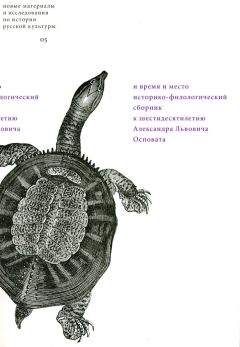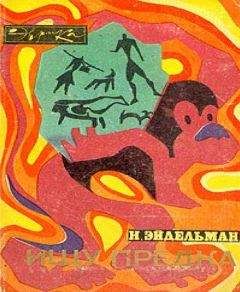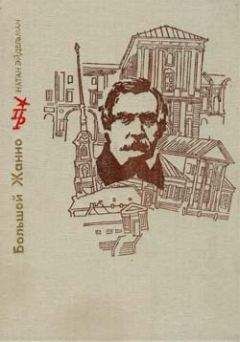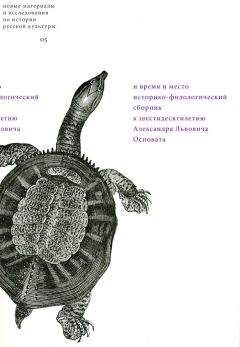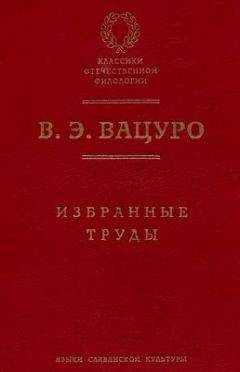Примечания
1 Рыцарь Дон Кихот. М., 1879.
2 История удивительного рыцаря Дон Кихота Ламанчского (по Сервантесу). М., 1895 (переиздано в 1900,1902,1904, 1909 годах).
3 См.: Цареубийство и марта 1801 года: Записки участников и современников. СПб., 1908. С. 58–59.
4 См.: Эйдельман Н.Я. Грань веков. М., 1982. С. 209.
5 См.: Мережковский Д. С. Данте, Наполеон. М., 2000. С. 327.
6 Валишевский К. Сын Великой Екатерины Павел I: Его жизнь, царствование и смерть. СПб., 1914. С. 480, 486, 488.
7 См.: Витязева В.А. Каменный остров. Ар-хитектурно-парковый ансамбль XVIII – начала XX века. Л., 1991. С. 52.
8 Письма Н.М. Карамзина к И.И. Дмитриеву. СПб., 1866. С. 42.
9 Белинский В.Г. Полное собрание сочинений: В 13 т. М., 1955. Т. 9. С. 81.
10 Писарев Д.И. Сочинения: В 4 т. М., 1955. T. 1.С.337.
11 Смирнов И.П. Бытие и творчество. СПб., 1996. С. 135.
12 Пушкин А. С. Полное собрание сочинений: В 17 т. М., 1949. Т. 12. С. 353.
13 Там же. С. 32–33.
14 Там же. Т. 13. С. 222.
15 Материалы для биографии М. Бакунина. М.; Л., 1933. Т. 2. С. 623–624.
16 Бакунин М. Исповедь // Алексеевский равелин. Л., 1990. С. 305.
17 «Не говоря о великости преступления, Вам должно быть очень смешно, Государь, что я один, безымянный, бессильный, шел на брань против Вас, Великого Царя Великого Царства! Теперь я вижу ясно свое безумие, и сам бы смеялся, если бы мне было до смеху, и поневоле вспоминаю одну баснь Ивана Андреевича Крылова… Но тогда ничего не видел, а шел как угорелый на явную гибель» (Там же. С. 280).
18 Герцен А.И. Собрание сочинений: В 30 т. М., 1959. Т. 16. С. 149.
19 «Без связей, без средств, один с своими замыслами посреди чуждой толпы, я имел только одну сподвижницу: веру, и говорил себе, что вера переносит горы, разрушает преграды, побеждает непобедимое и творит невозможное; что одна вера есть уже половина успеха, половина победы: совокупленная с сильной волей, она рождает обстоятельства, рождает людей, собирает, соединяет, сливает массы в одну душу и силу; говорил себе, что, веруя сам в русскую революцию и заставив верить в нее других, европейцев, особливо славян, впоследствии же и русских, я сделаю революцию в России возможной, необходимой» (Бакунин М. Исповедь… С. 294).
20 Салтыков-Щедрин М.Е. Собрание сочинений: В 20 т. М., 1971. Т. 12. С. 250.
21 Там же. С. 251.
22 Розанов В.В. Уединенное. М., 1990. Т. 2.
С. 392-393-
23 Леонтьев К.Н. Полное собрание сочинений и писем. СПб., 2006. Т. 7. Кн. 2. С. 54.
24 Достоевский Ф.М. Полное собрание сочинений: В 30 т. Л., 1976. Т. 15. С. 488.
David M. Bethea
Ghostlier Demarcations, Keener Sounds
Personality and Verbal Play in Pushkin’s Lyceum Verse
Pushkin’s biographers have often pointed out that the Lyceum played a special role in the poet’s psychic development, as a place (and a time) where a troubled youth’s better angels could be appealed to and where lifelong friendships based on shared experience and bonds of trust could be cemented.1 From Annenkov to Lotman to Bin yon, these six years of structure and routine become the “family life” that the young Pushkin did not have at home with Sergei Lvovich and Nadezhda Osipovna: “Nam tselyi mir chuzhbina;/ Otechestvo nam Tsarskoe Selo.” But the Lyceum was crucial to Pushkin’s development in another respect: it was a place that lent itself almost magically to poetical musing. As we learn from the famous opening to chapter 8 of Eugene Onegin:
В те дни, когда в садах Лицея
Я безмятежно расцветал,
Читал охотно Апулея,
А Цицерона не читал,
В те дни в таинственных долинах,
Весной, при кликах лебединых,
Близ вод, сиявших в тишине,
Являться муза стала мне.
Моя студенческая келья
Вдруг озарилась; муза в ней
Открыла пир младых затей,
Воспела детские веселья,
И славу нашей старины,
И сердца трепетные сны.
[In days when I still bloomed serenely
Inside our Lycée garden wall
And read my Apuleius keenly,
But read no Cicero at all —
Those springtime days in secret valleys,
Where swans call and beauty dallies,
Near waters sparkling in the still,
The Muse first came to make me thrill.
My student cell turned incandescent;
And there the Muse spread out for me
A feast of youthful fancies free,
And sang of childhood effervescent,
The glory of our days of old,
The trembling dreams the heart can hold.]2
The valleys that are “secret, mysterious” (tainstvennye) because they first gave birth to private reverie; the lakes and the swans (swans being a Derzhavinian metaphor for poetry to Pushkin and his Lyceum mates); the Apuleius whose adventure stories and sexual license are much more the attractive forbidden fruit for these teenagers than stern Cicero; the notion of withdrawal into the gardens (“v sadakh”) and into the student cell (kel’ia) that somehow miraculously opens out into an illumination called the Muse – all this is integral to the “blooming” (“ia bezmiatezhno rastsvetal”) of the future poet. In the essay to follow I propose to first give a brief sketch of the young Pushkin against the background of his Lyceum experience and then to examine aspects of his earliest attempts at verse in an effort to catch glimpses of the mature poet in the boy wonder. My point is not to raise the status of the juvenilia, but rather to see the latter as the creative laboratory wherein, regardless of initial artistic success or failure, different genre-specific “voice zones” are crystallizing and a consistent uniting lichnosf is coming into view. Pushkin is not yet “Pushkin,” to be sure, but if we look carefully there are moments when he could be. At the same time, the sense of risk that accompanies the adolescent Pushkin’s many and varied challenges to authority provides a “haunted” quality to his play – there will be consequences for his verbal actions – that will be a hallmark of some of his greatest works.
Before getting started let us recall what the eleven-year-old boy Sasha Pushkin first saw when he and Uncle Vasilii L’vovich entered one of the three imposing wrought-iron gates leading to the Great or Catherine Palace at Tsarskoe Selo on 9 October 1811 (OS). However occluded by two centuries of myth-making, the basic facts speak for themselves: the impressionable boy would have seen an architectural and landscape ensemble dazzling not only by Russian, but indeed by European and world standards. The Catherine Palace, the emperor’s summer residence, was an immense three-story Baroque edifice extending more than a football field in length; when viewed from within, its seemingly endless enfilade of parqueted chambers created the impression of a veritable Versailles-like hall of mirrors without the reflecting glass. In the northeast corner of the building was an archway connecting the Lyceum, whose four floors had housed the grand duchesses prior to marriage in Catherine’s time but now were newly renovated for the school, to the palace. Other visual marvels in the immediate vicinity included, some 500 meters to the north, the Quarenghi-designed Alexander Palace, chastely classical where the Catherine Palace was voluptuously baroque, a gift to her favorite grandson and future tsar by Catherine the Great; the Cameron Gallery, a grand arcade constructed by the Scottish architect Charles Cameron that extended southeast from the western end of the Catherine Palace and was elegantly lined with ionic columns interspersed with the busts of the greats from ancient and modern history; the Chinese Pavilion that was part of an elaborate oriental complex; several royal bathhouses inspired by the luxury of Nero and set on a wedding cake of terraces flowing south from the Great Palace; charming combinations of grottos, marble bridges, greenhouses, chapels, theatres, and reception halls; and of course, no less stunning than the architectural landmarks and designed with them in mind, the vast parks, beautifully carved around swan-festooned lakes with miniature islands and dotted here and there with monuments to Russian military victories, that were in the Dutch style during the time of Elizabeth and in the English style during the time of Catherine II. In short, this aestheti-cized space was alive with history and myth. The parks’ meandering paths and viewing sites were the perfect hideouts for a budding versifier.
In the company of his peers young Sasha Pushkin did not immediately stand out for his poetic craft. Numerous Lyceans tried their hands at verse, and of these Aleksei Illichevskii was considered the most promising to start with. Pushkin had two nicknames: the first, and best known, was “Frenchman,” which he earned because of his excellent command of the language, but which another classmate, Modest Korf, suggests may have had a pejorative coloring given the context (the Napoleonic wars). The second was “Mixture of Monkey and Tiger” (pomes’ obez’iany s tigrom). This latter sobriquet is particularly telling, as it foregrounds both Pushkin’s external features (he calls himself vrai singe in the 1814 “Mon Portrait”) and his love of pranks, on the one hand, and his sharp claws and fierce fighting spirit, on the other. An 1812 character report made by his professors cites many of the traits that made up this strange breed of tiger monkey: his talents are more “brilliant” than “substantial,” his mind “ardent” and “subtle” rather than “profound”; his diligence is “mediocre”; he is “well read” in both French and Russian literature, but his knowledge is “superficial”; he displays “pride” together with “ambition,” which at times causes him to seem “withdrawn”; “heated bursts of irritability, flippancy, and a special kind of witty loquaciousness” are characteristic of him; at the same time his “good nature” is noticeable, as he recognizes his faults.3 In his dealings with others Pushkin often found himself in awkward situations from which to extricate himself required tact; unfortunately, despite his essentially good heart, it was tact that he didn’t have. Close friend Ivan Pushchin says it with the greatest clarity:
From the very beginning Pushkin was more short-tempered than most and therefore did not arouse general sympathy. This is an eccentric person’s lot among people. It wasn’t that he was acting out a role or trying to impress us with special oddities, as happens with some people. But at times it was through inappropriate jokes and awkward witticisms that he put himself in a difficult situation, from which he could then not escape. This would lead to new blunders, which never go unnoticed in schoolboy dealings… In him was a blend of excessive boldness and shyness, both appearing at the wrong times, which by that fact harmed him further. It would happen that we’d both get in a scrape; I’d manage to wiggle out of it, while he could never set it right. The main thing that was lacking in him is what is called tact, that capital which is necessary in relations with comrades, where it is difficult, almost impossible, when involved in totally informal interactions with others, to avoid some unpleasant confrontation brought on by daily life.4
And Baron Korf, as precise and unforgiving as Pushchin is generous, has this to say about Pushkin:
Easily enraged, with unbridled African passions (his heritage on his mother’s side), eternally preoccupied, eternally immersed in poetical daydreams, spoiled from childhood by the praise of flatterers that can be found in every circle, Pushkin neither as a schoolboy nor afterwards in society had anything appealing in his deportment… In him was no external or internal religion, no higher moral feelings. He even asserted a kind of bragger’s pride in the supreme cynicism he showed these subjects… and I do not doubt that for the sake of a caustic word he sometimes said even more and worse than he thought and felt.5
As harsh as Korf’s appraisal is, there is also much truth in it, and when placed next to Pushchin s it affords us a rather accurate picture of how the adolescent Pushkin must have seemed to both well-wishers and to those he may have antagonized.
As is evident from these character sketches, Pushkin was in need of yet a third nickname: “Sem’ raz otmer’, potom otrezh’” (translation: “Measure Seven Times Then Cut,” or “Look Before You Leap”). How many times in later life he got himself in hot water by saying or doing something on impulse; the examples – insulting the principled Karamzin in a epigram, satirizing the powerful Uvarov as a gold-digger – are legion. At this stage, however, the consequences were less dire and often humorous. For example, one of the senior ladies in waiting to Alexander’s wife, the Empress Elizaveta Alekseevna, had a pretty maid, Natasha, and it was not long before Pushkin and his mates became infatuated with her. Once, as the boys were walking in smaller groups through the darkened palace corridor where the ladies’ chambers were located, Pushkin happened to be alone and heard the rustle of a dress nearby. He was certain it was Natasha. Without giving it a thought he rushed up and tried to embrace and kiss her, only to find out as the door suddenly opened that he had in his arms old Princess Varvara Volkonskaia She was insulted, Pushkin mortified. Soon thereafter the tsar himself was informed by the princess’s brother and called the Lyceum’s director, Egor Engelhardt, on the carpet. “What is going to come of this?” complained the sovereign. “Your schoolboys not only steal my ripe apples through the fence and beat the gardener’s watchmen, but now they also pester my wife’s maids of honor.”6 The tsar told Engelhardt to have the boy whipped, but luckily he refused and it eventually blew over. In the wake of the brouhaha an unrepentant Pushkin described the princess in an epigram as “an old monkey” (une vielle guenon).
